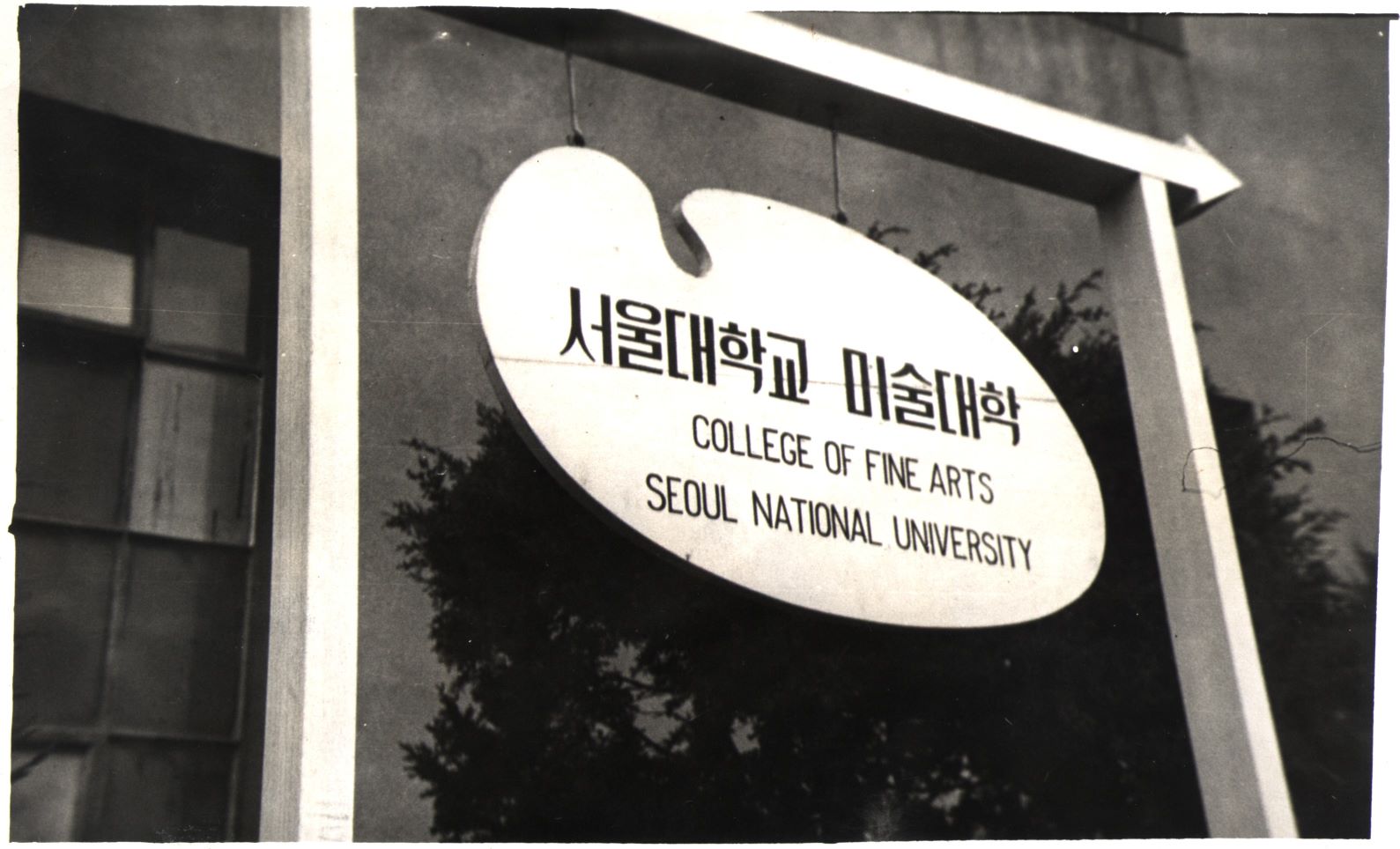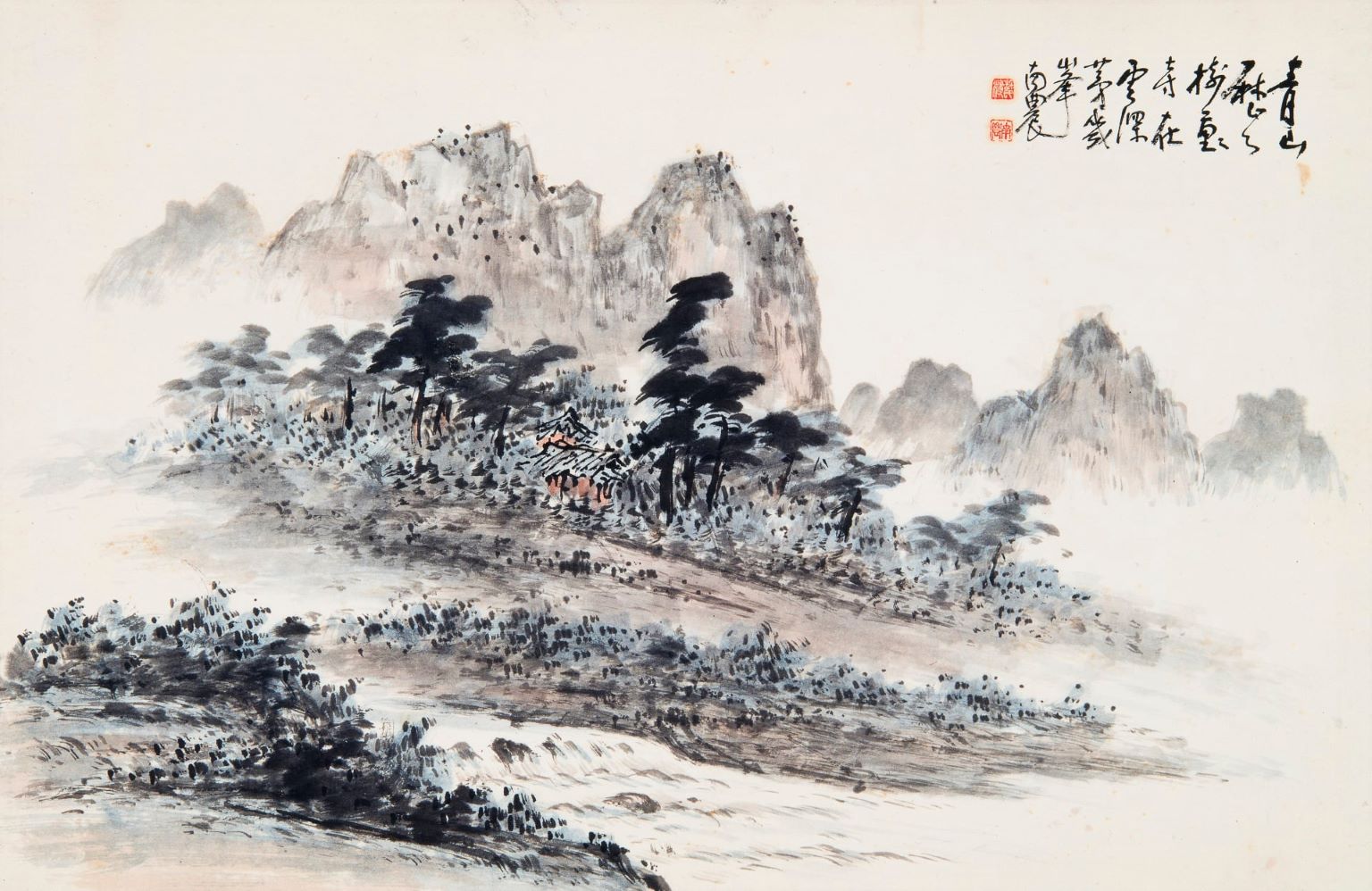
The First Mook Lim-Hoe Exhibition, Leaflet, 1960, Image provided by Kimdaljin Art Archives and Museum
Mook Lim-Hoe
* Source: Multilingual Glossary of Korean Art. Korea Arts Management Service
Related
-

College of Arts at Seoul National University
The College of Fine Arts of Seoul National University is located in Sillim-dong, Gwanak-gu, Seoul. According to the Decree on the Establishment of Seoul National University, the College of Art including the Department of Fine Arts and the Department of Music was founded in August 1946 at Seoul National University. The Department of Fine Arts consisted of sub-departments of Painting I, Painting II, Sculpture, and Design. It was organized by Chang Louis Pal and Lee Soonsuk. Chang Louis Pal had served as head of the Education and Management Bureau in the U.S. Army Military Government in Korea (USAMGIK) in Korea since December 1945. Lee Soonsuk assumed practical tasks as an advisor to the art section of the USAMGIK from 1946 when the Education and Management Bureau was changed to the Ministry of Culture and Education. In 1946, there were nine faculty members at the Department of Fine Arts in the College of Art: Chang Louis Pal, Kim Yongjun, Gil Jinseop, and Lee Jaehun as professors; Yun Seung-uk and Lee Soonsuk as associate professors; and Kim Whanki, Chang Woosoung, and Lee Byeonghyeon as assistant professors. However, after the incident of Korean students and professors’ protest against the U.S.’s attempt to merge several colleges and universities into a single university, Kim Yongjun, Gil Jinseop, and Kim Whanki resigned. In 1954, the College of Art was reorganized into the College of Fine Arts with three departments of painting, sculpture, and applied art. The Department of Aesthetics, which had temporarily belonged to the College of Fine Arts since 1948, was transferred to the College of Liberal Arts and Sciences in 1960. In 1963, according to the relocation plan of the Seoul National University main school building, the College of Fine Arts was moved to the former veterinary department building in Yeongeon-dong, Jongno-gu. In 1972, it was moved to the liberal arts department building in Hagye-dong, Seongbuk-gu, and then in 1976, to the current Gwanak campus. In 1981, the three departments of painting, sculpture, and applied art were reorganized into the five departments of Eastern painting, Western painting, sculpture, crafts, and industrial art. In 1989, the Department of Industrial Art was renamed the Department of Industrial Design, and in 1999, the Department of Crafts and the Department of Industrial Design were merged into the School of Design. Currently, the College of Fine Arts consists of the Department of Oriental Painting, Department of Painting, Department of Sculpture, Department of Craft, Department of Design, and Interdisciplinary Programs.
-

Suh Seok
Suh Seok(1929-2020) is an Eastern-style painter who emphasized modern inheritance of East Asian literati painting in Korean art from the 1950s through the 1990s. Winning the Prime Minister Award at the first National Art Exhibition (Gukjeon) in 1949, Suh attracted attention as a leading figure of the first generation of Eastern-style painters who received formal training at art universities after Korea’s liberation from Japan. From 1961 through 1981, he served as an invited artist, judge, and operating committee member of the National Art Exhibition (Gukjeon), and from 1962 through 1995 he worked as a professor in the Eastern-style Painting Department at the College of Fine Arts of Seoul National University. From 1964 through 1988, he served as head director, president, and advisor of the Korean Fine Arts Association [Hanguk misul hyeophoe]. In doing so, Suh played a significant role in promoting education on Eastern painting and establishing an Eastern painting section in art competitions within the Korean art system. In 1960, he led the foundation of Mook Lim-Hoe, the only group of young avant-garde artists within Korean Eastern painting circles. Through the participation in Mook Lim-Hoe exhibitions, which lasted until the eighth edition in 1964, and subsequent creations, he pursued the innovation of Eastern painting as contemporary abstract painting based on classic painting theories of East Asia. As an abstract artist working in ink and wash, Suh actively joined a number of international exhibitions, including the São Paulo Biennale, Triennale-India, and the Tokyo Biennale. In 2008, he was elected as a member of The National Academy of Arts. Among his notable works are Chapter of the Moon with a Ring (1954), Twilight at 0 Street (early 1960s), Inscription (1969), Long Life (1972), and the People series (in and after the late 1970s).
-

Semi-abstract
The term semi-abstraction refers to a painting that combines abstract and figurative painting styles together. Lee Ungno used the term in a different local context in relation to his work. In his book Appreciation and Technique of Eastern-style Painting (1956), Lee argues that semi-abstraction describes an artistic technique based on sketching from nature, which also further attempts to express an abstract atmosphere to better emphasize the author’s conceptual intentions. The concept was officially used in Korea at the 1961 Grand Art Exhibition of Korea to distinguish three divisions: western painting, semi-abstract work, and abstract work.
Find More
-

Eastern painting
Eastern painting (dongyanghwa) refers to the overall body of works created using traditional East Asian materials and methods, in contrast to Western painting. In Korea, Byeon Yeongro’s essay “On Eastern Painting” published in Dong-A Ilbo on 7th, July, 1920 was the first use of the term. The term then began to be used in Japan first to distinguish Oriental style paintings from Western ones. Until the late Joseon era, both calligraphy and painting were categorized under the term seohwa, but during the Japanese occupation of Korea in 1922, the first Joseon Art Exhibition [Joseon misul jeollamhoe] divided the painting section into Western and Eastern styles. Thereafter, the term Eastern-style painting entered official use in the country. After independence, the National Art Exhibition (Gukjeon) continued to use the term “Eastern painting,” but since 1970, numerous arguments were made to replace it with "Korean painting," because the term was imposed unilaterally during the Japanese colonial era.
-

National Art Exhibition
A government-hosted exhibition held 30 times from 1949 to 1981, also known by the shorter name Gukjeon. Following national independence, the exhibition was the primary means for young and emergent Korean artists to achieve recognition. The influence of the exhibition declined as a result of the emergence of non-figurative art during the 1970s, the increased opportunities for artists to participate in overseas exhibitions, and the rise of private exhibitions and galleries.
-

Korean Information Service Gallery
A gallery established in 1957 in Sogong-dong, Seoul. The parent organization of the gallery was the Office of Public Information. The gallery moved to a temporary building in the Northeast section of Deokusung in 1968. The Korean Information Service Gallery was originally a facility where a diverse range of exhibitions including art, crafts, and photography could be held for free, but changes in the Korean Information Service’s policy led the building to be used only for the promotion of government policies starting in April 1972. When the National Museum of Modern Art, Korea (now MMCA) moved to Deosukung Palace in 1973, this branch of the National Museum assumed the role of the Korean Information Service Gallery.






